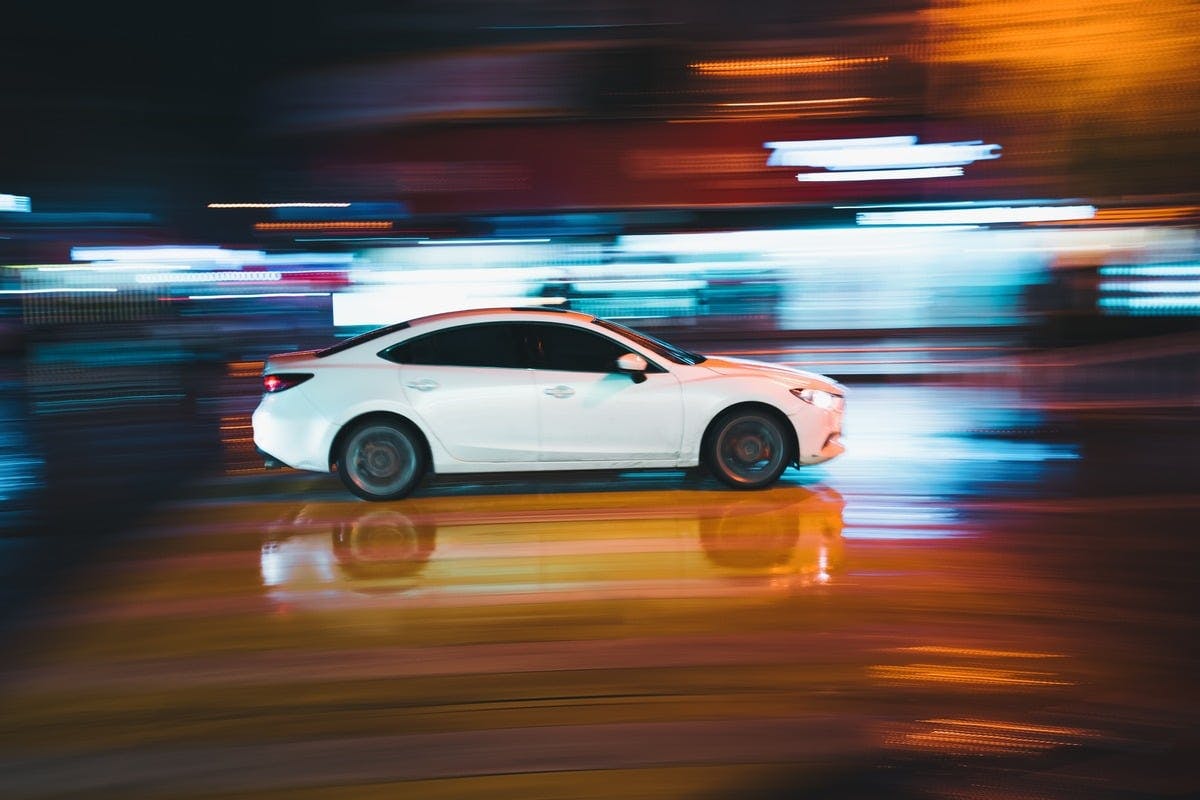The 7 Types of Car Insurance in Ontario you Should Know About
By Daniel Schoester | Published on 28 Mar 2023


There are seven main types of car insurance in Ontario. These seven types can be further divided into mandatory and optional categories. The four mandatory policies include Third-Party Liability Coverage, Accident Benefits, Uninsured Automobile Coverage, and Direct Compensation Property Damage.
On the other hand, the three optional types are Collision Coverage, Comprehensive Coverage, and Specified Perils Coverage. While optional coverages will provide more protection, they’ll also increase your monthly insurance payment (premium). Additionally, each policy has a predetermined coverage limit. You’ll need to pay for the difference if you exceed this amount. Increasing your coverage limits will also increase your premiums.
With all this in mind, choosing the right car insurance policy for you can be difficult. To get the best rate and coverage, it’s a good idea to shop around and compare different car insurance policies. This article will walk you through all the different types of coverages to help you find the best options. Each section has a table that provides a high-level overview of your opinions. In addition, everything is explained more thoroughly within their sections.
Mandatory Types of Insurance Coverages
| Minimum Requirement | Description | |
|---|---|---|
| Third-Party Liability Coverage | $200,000 | Pays for damages to the other party when you cause the accident. |
| Accident Benefits | $65,000 | Covers the healthcare and recovery expenses of you and your passengers. |
| Uninsured Automobile Coverage | $200,000 | Protects if you are involved in an auto accident with an uninsured driver. |
| Direct Compensation Property Damage | $200,000 | Repairs your vehicle and what’s inside when you’re not at fault. |
Four types of mandatory coverages are required to drive a car in Ontario. The scope ranges from damaging others’ property to your healthcare treatment. It also includes coverage for your vehicle when you’re not at fault or can’t find the guilty driver. However, they don’t cover non-collision events or the cost of repairing your car when you’re at fault.
Each policy has a deductible, which is the amount you must pay out of pocket when making a claim. For example, if you get into an accident and the repair costs $5000, but the deductible for your policy is $1000. You will be responsible for paying the first $1000, and the insurance company will pay the remaining amount.
It’s illegal to drive without mandatory coverage in Ontario. At best, you’ll be required to pay penalties ranging from $5,000 to $25,000. You could receive a license suspension or vehicle impoundment in more severe cases. The purpose of mandatory insurance is to make it easier and faster to get help after a car accident. For example, you’ll receive money from the insurance company instead of needing to work with the other driver.
1. Third-Party Liability Coverage
Ontario residents must have a minimum of $200,000 in third-party liability coverage. This type of insurance generally pays for damages to the other party when you cause the accident. There are two parts; bodily injury and property damage.
Bodily injury covers the medical bills or lost wages of people hurt in an accident you caused. Property damage covers the cost of fixing the other person’s car, their stuff, or anything else that got damaged in the accident. It’s important to remember that liability insurance doesn’t cover your vehicle or injuries, only the damage you cause to other people or their things.
2. Accident Benefits
Also known as Statutory Accident Benefits Schedule (SABS), this insurance covers the healthcare expenses of you and your passengers. It provides financial protection to anyone injured or killed in an automobile accident. Primarily, it covers the medical and rehabilitation costs of the insured person not covered by the provincial health plan (OHIP).
In addition, SABS provides other benefits, such as income replacement for those unable to work due to injuries. If you require assistance with daily activities, SABS may also cover hiring a caregiver or paying for care in a facility. The caregiver benefit can extend to hiring someone to care for your dependents.
Furthermore, if a person dies in an automobile accident, the SABS provides a death and funeral benefit to the surviving spouse or dependents. The death benefit is a one-time lump-sum payment, while the funeral benefit covers the deceased person’s funeral expenses.
SABS is a significant type of coverage. This is why many Canadians exceed the $65,000 in minimum coverage. The costs mentioned can add up quickly, and you won’t receive benefits above your coverage limit. Once you’ve exceeded this threshold, you’ll be required to pay for the costs. Drivers should carefully review their insurance policies to fully understand their coverage’s benefits and limitations.
3. Uninsured Automobile Coverage
Uninsured automobile coverage protects you when the other person’s insurance policy doesn’t. This can happen in two common scenarios: a hit-and-run accident or the other driver doesn’t have adequate coverage. A minimum coverage of $200,000 is required in Ontario.
It’s mandatory because it helps you if you get hurt or your car gets damaged by a driver who doesn’t have insurance. This type of insurance covers the costs of fixing your car, paying for medical bills, and any lost wages you may have because of your injuries.
4. Direct Compensation Property Damage (DCPD)
The final type of mandatory insurance is direct compensation property damage. Abbreviated to DCPD, this type of coverage repairs your vehicle and what’s inside when you’re not at fault. The purpose is to get your car repaired quickly and efficiently.
It’s called direct because you’ll receive compensation directly from your insurance provider. This avoids delays while the other person’s insurance company investigates the accident. Without this coverage, you could wait months while the other insurance company investigates and disputes who’s at fault.
The key is that you’re not at fault. You’d need collision coverage to repair your vehicle if you are at fault. There are other additional requirements, such as the need for more than one car involved, and it needs to happen in Ontario. In most cases, DCPD will only cover you in Ontario. This means you’ll need to receive compensation from the other insurance company.
Optional Types of Insurance Coverages
| Description | |
|---|---|
| Collision Coverage | Protects damage to your vehicle caused by a collision with another object or vehicle, regardless of who is at fault. |
| Comprehensive Coverage | Broadly protects damage to your vehicle caused by a non-collision event, such as vandalism or theft. |
| Specified Perils Coverage | Protects specific losses or damages to your vehicle, such as fire and hail damage. |
In addition to the four mandatory coverages, many Canadians include additional ones. These fill the coverage gaps not included with the required options. For example, you won’t receive coverage for repairing your vehicle if you cause an accident. To fill this gap, you can purchase collision coverage.
However, this also won’t cover you from non-collision events. For example, you’ll need comprehensive coverage for damages due to a storm or theft. This is the same for events such as vandalism and fire damage. Some people prefer specific perils coverage, which lets you hand-pick the coverages you prefer.
5. Collision Coverage
Collision coverage is a type of car insurance that covers the cost of repairing your vehicle if you get into an accident that is your fault. It includes situations where you collide with another car, hit a stationary object like a mailbox or tree, or roll over your car. Collision coverage is beneficial if you have a newer or more expensive vehicle that would be costly to repair or replace out of pocket.
However, it’s important to note that collision coverage only covers damage to your vehicle in the event of an accident. It does not cover any injuries you or others may sustain or damage you may cause to other people or their property. You would need different insurance types, such as accident benefits or third-party liability.
For example, let’s say you’re driving your car and accidentally run into a guardrail on the side of the road. If you have collision coverage, your insurance company will cover the cost of repairing the damage to your car. However, if you had only liability insurance, you would be responsible for paying for the repairs. Compared to other types of insurance, collision coverage is often more expensive because it covers repairing or replacing your vehicle.
6. Comprehensive Coverage
Comprehensive coverage is a type of car insurance that covers damage to your vehicle caused by something other than a collision, including theft, vandalism, hail, storms and more. It also covers theft or damages to your car while it’s parked.
This type of insurance can benefit people with a newer car that’s expensive to repair or replace out of pocket. It’s also useful for people who live in areas with frequent inclement weather, as hail and storms can cause extensive damage to vehicles. Comprehensive coverage is often more expensive than other types of car insurance because it covers various perils.
However, the cost may be worth it if you have an expensive vehicle or live in a weather-prone area. The key is to consider your individual needs and budget when deciding whether or not to purchase comprehensive coverage. This shouldn’t be confused with specified perils, further explained below.
7. Specified Perils Coverage
Specified perils coverage is a type of car insurance that covers damage to your vehicle caused by specific events. It’s a step down from comprehensive coverage, which includes many perils. Instead, you can hand-pick the protections you want.
Unlike comprehensive coverage, specified perils coverage only covers certain risks, so that it may be less expensive than other types of insurance. However, this also means it will cover fewer situations, so it’s essential to consider your individual needs and budget when deciding whether or not to purchase specified perils coverage.
